Guides • Perfecting your Craft
Last updated on Aug 31, 2021
What is a Preface? Characteristics and Examples
Ricardo Fayet
Reedsy co-founder and Chief Marketing Officer, Ricardo Fayet has worked with hundreds of authors on their launches and marketing campaigns. He is the author of two bestselling guides on marketing for authors, and a regular presenter at the largest writers' conferences.
View profile →A preface is an introductory passage written about a book by its author. It lays out why the book exists, its subject matter, and its goals. Prefaces are more commonly found in nonfiction books, but they can also be used in fiction.
Because prefaces are part of a book’s front matter, they’re often confused with forewords and introductions. However, there are key differences among the three: a preface gives explanatory context for the book, while the introduction dives directly into the story, segueing smoothly into the body text. And while a preface or an introduction is typically written by the book’s author, a foreword is written by a separate person — usually an expert who lends the book credibility.
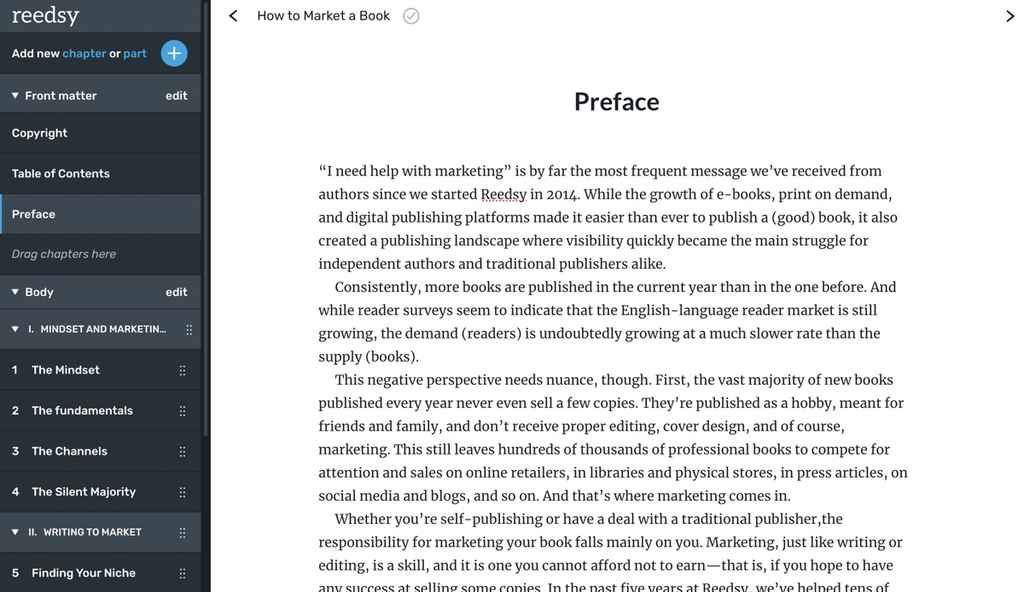
Now that we know what a preface is (and isn’t), let's break down what greater purposes they can serve in a book, along with some examples to demonstrate.
Gets the reader invested
A preface is an author’s chance to sell readers on their book. It should be written with the intent to draw readers in, rather than simply self-mythologize or over-egg a message that is already clearly conveyed in the book. Instead of boosting their own ego or spoon-feeding their message to readers, an author should aim to whet readers’ appetites with their preface.
Q: Are you #TeamPrologue or #TeamNoPrologue, and why?
Suggested answer
There can be the temptation, especially in the genre of fantasy and science fiction, to 'front-load' with the prologue. That is, to start with a chunk of exposition, setting out the geography and rules of your world. This, however, can be very dry. The reader will want to explore your world through your characters' eyes; this makes for a much more evocative experience whereas a history/geography lesson can make it feel like you're reading a text book, regardless of how complex and beautifully worked out the setting of your novel is. However, I'm not opposed to a prologue, as long as it serves a valid function in telling your story and is not just there to 'info-dump.'
As with all writing rules, there has to be some elasticity here. Prologues work well when they work well, and don't when they don't. When I'm editing a work, I don't automatically assume a prologue should be cut. Rather, I approach each prologue on its own merits. If I feel that the information in the prologue would work better gradually revealed through the course of the story, then that is what I'll suggest. So, in this, I suppose I'm #TeamSittingOnThePrologueFence.
Jonathan is available to hire on Reedsy ⏺
Tricky one! But honestly, I'm #TeamNoPrologue 90% of the time. Why? Because most prologues don't do much in story terms. A prologue only really works (and is therefore needed) if by the end of the story the reader gets a "ker-ching!" realisation about the prologue... perhaps they race back to it, and read it again, because now it makes sense, and adds something vital to the story.
I've worked on 300+ novels over the last eight years or so, and I've read a lot of prologues. My most common note on them: "Is the prologue needed? I think it could go. Just start the novel with chapter one?"
Ditto epilogues, actually. I had both a prologue and an epilogue in one of my novels. A reader who I know and trust told me my epilogue added nothing to the story: it didn't reveal anything new or additional. I was a little resistant to this at first. Months passed, and I realised she was right. I've since re-issued my novel without the epilogue, and it's a better novel for that deletion.
So weigh it up, and be honest about the role of your prologue. If you even have an inkling that it's mere baggage, listen to that instinct, and get rid of it. You can always put it back later if you change your mind.
Louise is available to hire on Reedsy ⏺
It depends. Prologues, and specifically prologues that flash forward to a climactic scene later in the book, can sometimes be useful in cases where a novel starts slowly. Mind you, it’s usually worth asking why it starts slowly and what can be done to frontload more plot. But there’s a Hitchcock quote about suspense vs. surprise that I like a lot:
"We are now having a very innocent little chat. Let's suppose that there is a bomb underneath this table between us. Nothing happens, and then all of a sudden, "Boom!" There is an explosion. The public is surprised, but prior to this surprise, it has seen an absolutely ordinary scene, of no special consequence. Now, let us take a suspense situation. The bomb is underneath the table and the public knows it, probably because they have seen the anarchist place it there. The public is aware the bomb is going to explode at one o'clock and there is a clock in the decor. The public can see that it is a quarter to one. In these conditions, the same innocuous conversation becomes fascinating because the public is participating in the scene. The audience is longing to warn the characters on the screen: "You shouldn't be talking about such trivial matters. There is a bomb beneath you and it is about to explode!"
In the first case we have given the public fifteen seconds of surprise at the moment of the explosion. In the second we have provided them with fifteen minutes of suspense. The conclusion is that whenever possible the public must be informed. Except when the surprise is a twist, that is, when the unexpected ending is, in itself, the highlight of the story.”
To my mind, the best use of a flashforward prologue is one that plants that metaphorical bomb under the table. You give away something that will happen later on in the story so that the reader will A) want to know how it happens, B) feel an increasing sense of suspense and dread as we see things starting to line up toward the preordained scene, and C) be looking forward to finally getting to that scene so they can find out how it resolves.
Nora is available to hire on Reedsy ⏺
Echoing what others have said, this is a complex question. I love a good prologue--with the key word being good. Many newer (and sometimes even seasoned!) authors attempt a prologue that doesn't end up serving the story well. They either provide a bunch of backstory to set up the story (instead of just diving into the story and weaving in the necessary backstory where it's necessary) and end up confusing the reader or they drop us right into the action that we then go back and lead up to from a less intense/intriguing first chapter to that scene in the prologue. If the beginning of the story isn't compelling enough and that's the reason you're adding a prologue (to essentially make a promise to the reader), then it's time to go back to Chapter One and elevate it OR consider starting the story somewhere else with something more compelling. In my experience, most prologues don't need to be there. BUT I love to be surprised by a well-crafted one!
That said, an effective prologue will be short and frame the story. It’ll set the tone, the location, give us clues, give us something surprising to look forward to figuring out, etc. But above all else, it will make the reader curious enough to want to keep reading. It can’t feel like we're being fed a bunch of backstory or explanatory details, rules of the world, opinions, etc. It can't feel like information is being withheld either--and many times, that's what happens when the author is trying to be clever about dropping bits of information. There's a fine line between causing confusion and evoking curiosity. A good prologue is compelling; it grabs the reader and doesn’t let go. And at the end of the day, ask yourself these two questions: What is the prologue doing that the first chapter can't? Can the story make sense without the prologue? If so, cut the prologue and strengthen your first chapter.
Kathleen is available to hire on Reedsy ⏺
I'm #TeamNoPrologue, and I'll give you a peek at why. There are two kinds of prologues:
Flash Forward Prologue
In the Past Prologue
In the first type, you jump forward to where the action is, to assure the audience that YES, good stuff is coming! Once you've hooked them with that, you can get back to the boring setup of who, what, and why that they need to contextualize the future action. But in the early 2000's, agents started wising up and thinking...you know what's better than having an action-packed Ch 1, then going back to the boring setup stuff? A story that's interesting right from the get-go! So I'd focus on designing the opening moments of your story to be fun to watch, while demonstrating what the audience needs to know.
In the second type of prologue, by definition, you're starting before the story gets going, in a bit of backstory that will become important later. The problem? You don't know why it's important until...later. So why would you want to read it now?
This is why my favorite advice is: Find the chase, and cut to it!
Think about the moment your story really takes off, and design the scene so we find out everything we need to know through the way that scene plays out! Instead of a chapter to show us your character is a party girl, then a second chapter where she has an alien encounter, show her passed out in a mansion full of stolen Slinkies from last night's party--then have the aliens abduct her right out of the middle of the wreckage. It's quick, it's bursting with show-don't-tell characterization, and it's fun to watch...no prologue required!
Michelle is available to hire on Reedsy ⏺
I am staunchly against prologues until I read one that works, and then I'm totally won over! In other words-- and unfortunately-- it depends.
While writing, I'd encourage authors to consider the advantage of labeling their opening section "a prologue" versus "chapter one." If they're calling something a prologue simply because it exists outside the normal timeline of the book's narrative, then I become dubious. I admire prologues which feel less like preambles and more like cannon shots. To me, "this prologue offers background information" is not sufficient justification. It needs to add something to the book beyond logistical context: intrigue, tone, voice, etc.
For example, right now I'm reading the novel The Extinction of Irena Rey by Jennifer Croft. The book begins with a prologue titled, "Warning: a note from the translator." This is not a literal warning from a real translator. Instead, it's a character within the novel explaining their point-of-view, their closeness to the book's subject, and the fact that "part of the plot is inspired by true events, and although I can't say which part... we live in Mongolia, which has no extradition treaty with Poland...." To me, that's super intriguing: an unreliable narrator immediately remarking upon extradition! Are they in trouble? What's going to happen in Poland? So while this prologue articulates some background information, it's equally concerned with tone, voice, and setting the plot in motion.
Kevin is available to hire on Reedsy ⏺
Depends on the book, of course, but in general, I like a well-done prologue as an intro to a novel. Sets it up, and can act as a strong hook for a potential reader when done right. Other times, though, when it meanders, it can be a detriment—I once deleted both the prologue and epilogue of a book, and the writer couldn't've been happier; he said it was exactly what it needed—ditch the setup, and don't overexplain the ending. But yeah, definitely depends on the book.
Brett is available to hire on Reedsy ⏺
Like many answers when it comes to the craft of writing, the answer for me is it depends (I know, I know, a frustrating answer!) Prologues can be a swift way to draw readers into the story, giving vital information that can't be shown elsewhere. If they're too long, sometimes readers skip over them to get to the 'good stuff'.
When I evaluate whether a prologue is needed, I often look at a few things:
- Is it too long and can it be shortened while retaining the same information?
- Does this prologue contain elements that are vital to the story?
- Does removing the prologue change the story in any way, good or bad?
If the answer to that last point is no, then that's a good sign that the prologue can likely be cut or doesn't need to be there. When deciding on whether to include a prologue or not, ask yourself: Can the information in this prologue be shown any other way somewhere else in the book? Is this prologue a sort of pre-writing exercise for me as the author to help me get into the world and characters, and can be cut later? And, as I evaluate, if I remove this prologue, what about the book and story changes?
Sometimes you may not know if a prologue works, and I like to read through the book in its entirety before deciding on whether the book would be stronger with/without the prologue.
Sean is available to hire on Reedsy ⏺
I don't see any need for teams here. It's a question for each individual book.
A prologue can build suspense, like a teaser; it could be a flashback or -forward. It may be pointless: for example, some writers will call their first chapter a prologue when it's just Chapter 1.
A developmental editor can advise on this: they may suggest adding a prologue by pulling out a section of text from a later chapter; or blending the existing prologue into the main narrative; or renaming it 'Chapter 1' ... Whatever they think works for the book, they will say, and the author can agree or disagree, because it's their book and they always have the final say.
Vicki is available to hire on Reedsy ⏺
It depends, y’all! As an editor, I am on #TeamPrologue when the prologue serves an explicit purpose in the storytelling that could not be achieved otherwise. Does it create a compelling hook that could not be accomplished in a different way? Does it provide essential backstory, critical to understanding the story’s forthcoming arc, that would not fit anywhere else in the story? Is it presenting the overarching themes so that they will resonate throughout the entire novel?
I’ve worked on romances that have a backstory prologue that makes you feel for the main character in ways that could not be executed with another approach. I’ve worked on fantasies that have a bam-pow future-flash hook in the prologue that instantly makes the story a page-turner, a how-did-we-get-here? tale of suspense.
Ask yourself what the prologue is providing your story. If your manuscript can start in a simpler, more linear way, then maybe go with that instead. But I’m definitely #TeamPrologue if it services the story in a particular way that pulls at your heart strings, makes your heart start to race, or creates any other sort of heart-feels that get you to fall in love with a story.
Sandra is available to hire on Reedsy ⏺
To that end, a preface should give some irresistible insights into a book’s content. In nonfiction, this may be a brief mention of the book’s thesis and the areas it will cover, while in fiction, authors have a little more creative freedom to tempt their audience. Regardless of what’s in it exactly, your preface should do one thing above all: compel readers to keep turning the pages.
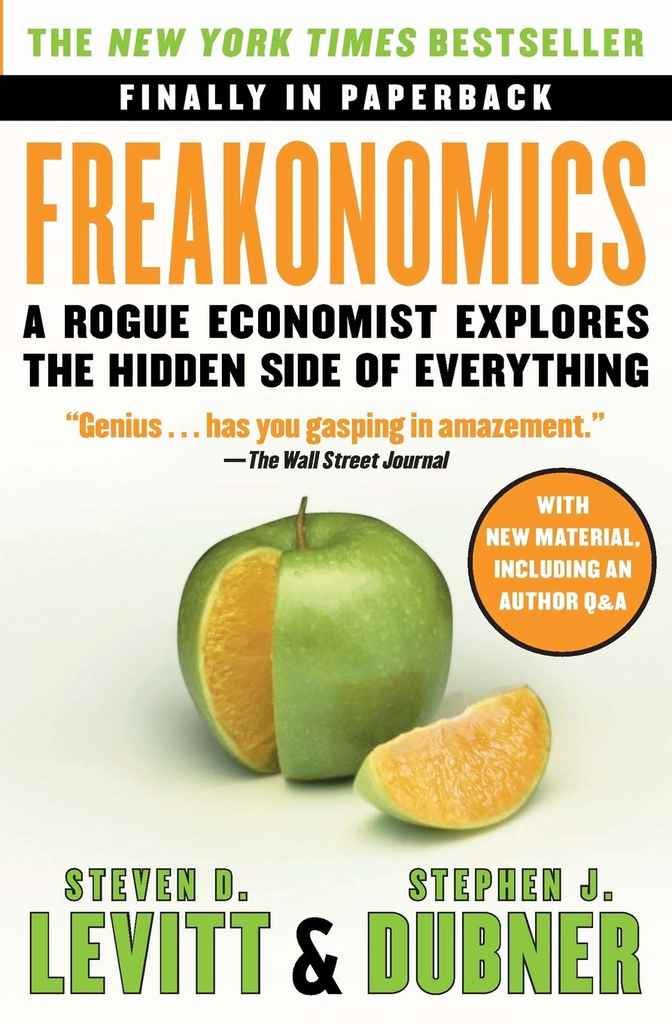
Example #1: Freakonomics by Steven Levitt and Stephen Dubner
Titled “An Explanatory Note,” the preface to this nonfiction phenomenon gives us a glimpse not only into the co-authors’ backgrounds but also into their relationship to one another. It recalls a meeting of the minds between the economist fascinated by “riddles of everyday life” and the journalist who was relieved to meet an academic with a talent for speaking in plain English. With the authors’ bona fides firmly established, this preface beautifully tees up what the reader can expect: genuine academic insight into economics, written plainly yet with passion.
💡 Give exclusive-yet-succinct insights to intrigue
Don’t go overboard in teasing what’s to come — this is a chance to show off your content and draw readers in, not to baby your audience through points that will become perfectly obvious in the course of your book. Aside from a brief description of the key figures (or main characters, if writing fiction) and core themes, leave the rest up to the book itself. Less is more!
And to differentiate your preface from, say, your blurb, make these insights sound like they’re actually coming from you (which they are!). You can do this not only by writing in your authorial voice but also by signposting your personal opinion. Discuss how excited you are for readers to meet a favorite figure/character, or to read a chapter you’re especially proud of. But again, don’t be too effusive — in terms of length, your preface should be 2-3 pages at most.
Explains why the book was written...
A preface is a perfect place to provide the rationale behind a book and what the author’s goal was in writing it. If they were driven by a specific purpose, or have something they hope their readers will learn from the book, this is their opportunity to share it.
The author might reveal what inspired them to write this book, how they came to care about the subject, or why they’re uniquely qualified to write about it. Knowing that the author has a passionate, personal connection to the subject can get readers excited — not to mention that sharing relevant credentials or experience will reassure them that they’re in safe hands.
Example #2: A Promised Land by Barack Obama
The preface to Barack Obama's latest memoir, A Promised Land, invites the reader to join him at the end of his presidential run. He reveals that he started writing the book on his last flight on Air Force One, driven by a need to record his time in office. But A Promised Land is more than a chronicle; Obama states that the greater reason for this book was to show what it’s actually like to be the president and to inspire others with his story of finding purpose in public service.

His preface provided such a strong introduction to the book that it was not only highly effective at enticing readers, but also worked as a standalone piece. The preface was widely excerpted and republished during the publicity push for A Promised Land — a lesson that a well-written preface can be an extremely useful weapon in your book’s marketing arsenal.
💡 Ground your book in a single lightbulb moment
Your readers don’t need to know about every single event leading up to your book. Rather, consider following in Obama’s footsteps and grounding your book in a particular moment of inspiration, as he had on Air Force One. Don’t waffle around about how you always wanted to write something — instead, pinpoint a meaningful, memorable moment for the story to begin.
Q: What techniques can authors use to hook readers from the first page?
Suggested answer
Start with your main character doing something somewhere and start in the middle of the action. If there is a hurricane coming, have them board up the windows of their home. If they are dreading an upcoming test at school, have them look over their last test grades and worry that this next test won't be any different.
You want to avoid "talking heads." This is what publishers think when there is dialogue going on between characters, and because there is no sense of "place" or "setting", the story comes off as characters "talking in space." This is why you want the characters to be somewhere and do something in every new scene you draft, not just the opening.
Readers like to visualize the action in a book, even if the "action" is inward. So start off with a visual picture of your main character doing something, and this should hook readers.
Melody is available to hire on Reedsy ⏺
I recall reading a memoir of a famous tennis player and he started it by plunging the reader into his experience of facing a relentless machine shooting balls across the net to him -- all the fatigue and pressure of trying to become a pro was encapsulated in the scene. Much more interesting than starting it with when and where he was born etc.
John is available to hire on Reedsy ⏺
...or reveals something about the author’s process
Again, your preface is your chance to tell your book’s story — and this can not only mean why, but also how it came to be. An author can use a preface to reveal behind-the-scenes info about the writing process that might pique readers’ interest.
Most important (and exciting for the reader!) is to share details of the writing journey itself. What challenges did you have to overcome as an author? How did your perspective evolve as you wrote the book? It’s important not to get too navel-gazey when explaining these aspects, but some vivid autobiographical details can really get readers invested in you and your work.
You might also include methodological matters in your nonfiction preface: how you conducted your research, why you took a particular approach, and the specific parameters of your book (i.e., why you’ve focused on this topic and what the limits of your knowledge are). It reassures readers that you’ve done your due diligence and shows you’re fully transparent.
💡 Add an author signature to seal this moment in time
The standard preface format includes a “signature” from the author, along with the date and time of writing. This is an excellent way to signal that you’re writing with hindsight: now that you’re at the end of your writing journey, you can reflect on how the book’s direction may have changed over time, and how your own life and emotions were affected while writing.
This slight temporal distance from your original work will not only make the preface feel more profound, but the specific date will also seal this particular moment in time — which could be fascinating for posterity.
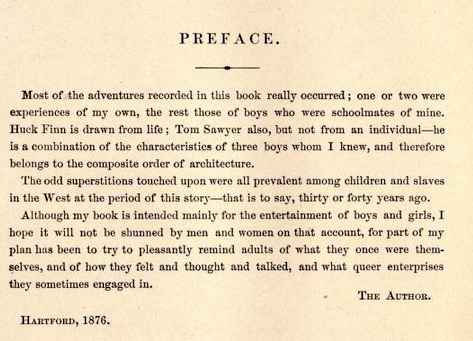
Provides essential historical or social context
If certain details will add to the reader’s experience but don’t quite fit in the book itself, the preface is the place to share them. When the author wants to situate their story without explicitly doing so in the main text, they can use the preface to fill in any gaps.
With nonfiction, authors will often mention previous, relevant literature or research in their preface, placing the work in a wider academic or historical context. A preface also provides context to future readers — in case anything changes after you write the book, the preface can acknowledge that, while explaining how the original work is still valuable. And of course, if you as the author change your mind about something, you can re-issue your book with a preface explaining how your views have evolved or what you would do differently today.
Q: In what circumstances should an author consider adding a prologue to their book?
Suggested answer
A good prologue will provide intrigue and spark curiosity. It whets the reader's appetite and poses a question that the book will answer.
How does it do this? A good prologue is there to tease something that happens deeper in the novel that becomes clearer later on.
I don't think that prologues that tell something about the past are as effective. If there is something deep in the past that sheds light on the narrative, you want to save that to be revealed later on in the story. Giving it all away upfront defuses, rather than increases, narrative tension.
I would always caution against anything like a dream or some other kind of less-than-real moment as a prologue as it is very important that the reader is focussing on the right kinds of mystery (what is the secret of this story? what will be revealed?) and not on the wrong kinds of mystery (who is this? why am I hearing about this now? what's going on?).
You can find your prologue by picking a moment from deep inside the story that ticks some or all of these boxes: a moment of tension, a moment of misdirection, a gathering together of some of the themes of the novel, sensory details that will stick in the reader’s mind.
Play around with your own version of this to see how it affects the narrative.
Laura is available to hire on Reedsy ⏺
Agents often ask if the prologue is REALLY necessary. I’ve published books with and without, and I’ve found it to be a useful tool when it:
- Establishes genre. Sometimes, a story needs some setup before the genre really kicks in. For example—in Twilight, it’s more than halfway into the book that the promise of the premise (girl engaged by vampires by way of loving one) kicks in. So we get a passage that gives us a little taste of what’s to come.
- Will be a fun callback at a penultimate moment of the story, bringing things into focus in an exciting way
- Creates mystery and intrigue
- Sets a ticking clock. Sometimes, a prologue is a flash forward to a time in the near future, showing us danger to come and setting up suspense from the beginning. You’re telling the reader, “Everything may look nice in chapter 1, but in three days, we’ll be on the edge of a cliff.”
I’ve seen prologues get cut when their function is to add ambience or world building, character development, or when they are attempting but not succeeding at one of the above strategies. Often, a writer will have to explain why this prologue has to exist in this format and why this scene can’t be worked into the book otherwise.
Happy writing!
Wendy is available to hire on Reedsy ⏺
Well, Prologues are tricky, as you obviously know from asking the question. First, readers and gatekeepers are not fond of them, and second, they sometimes feel like sidelines with separate stories and characters that were nonessential. This is because the only reason to adda. prologue is if you have a piece of the story to tell that is essential for readers to know to understand the rest of the story, whether right away or deeper in. Maybe an earlier event sets up circumstances that are key to the story (like how Superman got to Earth and why he has powers, to use a classic example), or maybe it sets up events on the world that take generations to come to a head but which are core to events in your story. Either way, the prologue should be full of conflict and action with a core character we quickly care about. Even if that core character is a predecessor to later characters, he or she must be someone we feel and root for. Never ever should your prologue be a history lecture or summary about events that took place before the story. Any of those which are essential can be told about through dialogue and narrative voice and so on as needed, and as needed only. History lesson prologues never ever work. They are the main reason prologues have gotten such a bad name.
Hope this answers your question. Best of luck!
Bryan thomas is available to hire on Reedsy ⏺
I think prologues are most effective when used as a quick hook to lure the reader in—something action-packed and exciting. Other reasons might be to set up a larger fantasy/dystopian world where a brief primer might put the reader in the right frame of mind for the broad scope of the main text of the novel.
Brett is available to hire on Reedsy ⏺
Here's a rough guide on whether you should consider adding or removing a prologue from your book:
- Is it too long and can it be shortened while retaining the same information?
- Does this prologue contain elements that are vital to the story?
- Does removing the prologue change the story in any way, good or bad?
If the answer to that last point is no, then that's a good sign that the prologue can likely be cut or doesn't need to be there. When deciding on whether to include a prologue or not, ask yourself: Can the information in this prologue be shown any other way somewhere else in the book? Is this prologue a sort of pre-writing exercise for me as the author to help me get into the world and characters, and can be cut later? And, as I evaluate, if I remove this prologue, what about the book and story changes?
Prologues can be a great and powerful way to get the story started, but like everything else in a novel it has to have a purpose to serve the story.
Sean is available to hire on Reedsy ⏺
For a novel, the prologue can tease the reader with a crucial moment well into the plot.
My first novel had an ordinary start with a young schoolteacher in pioneer Michigan meeting the man she would marry a few months later. Ho hum. But as I looked at my draft, I saw that in a moment thirty years later, she summed up everything in a few strokes of a pencil. I used that scene as my prologue, asking on the cover, "Why did she edit her wedding-day journal?"
Or the prologue can set the stage with a significant action long before the events of the opening--a theft, a car crash, or a kiss that makes all the difference, setting the plot in motion.
In a draft we may want to begin at the beginning, but as we revise, we can use a prologue to mix things up or tantalize with a taste of what's coming.
Cindy is available to hire on Reedsy ⏺
Here's the definition of a prologue with regard to a novel - An introduction or introductory chapter, as to a novel.
Many classic novels, particularly those narrated by characters in the story, set the scene and tone of the book in the way some prologues intend to do. Sometimes a single line or a few will do that.
1) Moby Dick - “Call me Ishmael”…
2) A Tale of Two Cities - It was the best of times, it was the worst of times, it was the age of wisdom, it was the age of foolishness, it was the epoch of belief, it was the epoch of incredulity, it was the season of Light, it was the season of Darkness, it was the spring of hope,
3) The Adventures of Huckleberry Finn, first paragraph - You don’t know about me without you have read a book by the name of The Adventures of Tom Sawyer; but that ain’t no matter. That book was made by Mr. Mark Twain, and he told the truth, mainly. There was things which he stretched, but mainly he told the truth. That is nothing. I never seen anybody but lied one time or another, without it was Aunt Polly, or the widow, or maybe Mary. Aunt Polly–Tom’s Aunt Polly, she is–and Mary, and the Widow Douglas is all told about in that book, which is mostly a true book, with some stretchers, as I said before.
4) To Kill A Mockingbird, first two paragraphs - When he was nearly thirteen, my brother Jem got his arm badly broken at the elbow. When it healed, and Jem's fears of never being able to play football were assuaged, he was seldom self-conscious about his injury. His left arm was somewhat shorter than his right; when he stood or walked, the back of his hand was at right angles to his body, his thumb parallel to his thigh. He couldn't have cared less, so long as he could pass and punt.
When enough years had gone by to enable us to look back on them, we sometimes discussed the events leading to his accident. I maintain that the Ewells started it all, but Jem, who was four years my senior, said it started long before that. He said it began the summer Dill came to us, when Dill first gave us the idea of making Boo Radley come out.
I deeply love Harper Lee's novel and the film that came from it, and the handwritten letter she sent me. I was equally moved by the opening page of William Styron's Sophie's Choice.
What do all these things have in common? They set the scene but more importantly, they draw you in as a reader. All these examples make you turn the page. A prologue set off as such should draw you in to the world of the novel. If you can do that with an opening chapter, you don't need a prologue.
Skip is available to hire on Reedsy ⏺
That said, some authors forget that many readers will (unfortunately) breeze straight through the front matter — so if something is truly essential to a reader’s understanding, this isn’t the place for it. A preface is best viewed as bonus insight into a book, rather than a presentation of things you must know to understand it; information like that would be better labeled as an introduction.
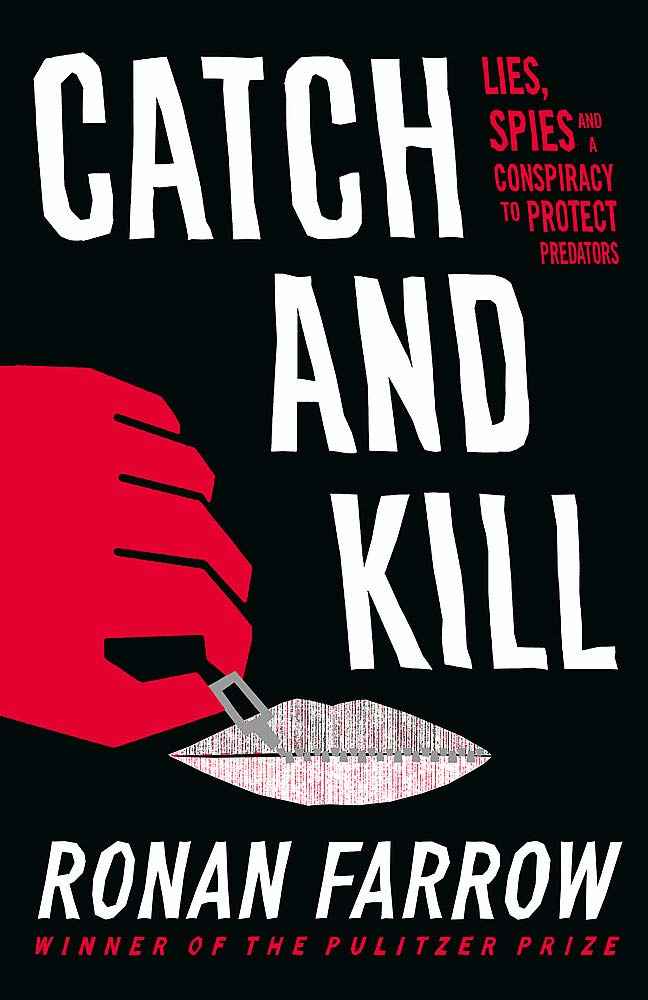
Example #3: Catch and Kill by Ronan Farrow
Ronan Farrow’s journalistic true crime book, Catch and Kill, recounts the challenges the author faced while investigating powerful media predators like Harvey Weinstein, and the widespread industry corruption that allowed them to hide in plain sight for decades. As a result, new developments were coming out even as the book was going to press.
To make up for this, Farrow included a preface discussing developments in the story after the book was submitted to editors — a perfect example of a preface giving illuminating context which can’t fit neatly into the main narrative of the book.
💡 Highlight the book’s key influences
As well as historical, geographical, or social context, you can also reference literary context here. If you’re particularly indebted to or inspired by an author or literary tradition, mentioning it within your book’s preface lets prospective readers know what to expect and look out for.
One author who took this approach (bonus example alert!) was Virginia Woolf, who included a long list of literary “friends” in the preface of Orlando:
“Many friends have helped me in writing this book. Some are dead and so illustrious that I scarcely dare name them, yet no one can read or write without being perpetually in the debt of Defoe, Sir Thomas Browne, Sterne, Sir Walter Scott, Lord Macaulay, Emily Bronte, De Quincey, and Walter Pater, to name the first that come to mind. Others are alive, and though perhaps as illustrious in their own way, are less formidable for that very reason.”
It’s a nice way of placing your story within a canonical context, hinting at possible literary allusions your readers may find later in the book, and acknowledging the authors who paved the way for you. Note, however, that you can always save these kinds of acknowledgments for the back matter of your book.
If you do opt to include a preface, it’s these unassuming pages that will kick off your work. So no matter what you choose to include, make sure it starts with a bang — so that your book doesn’t continue on a whimper.
Speaking of which, let's continue on to the next section: the prologue!
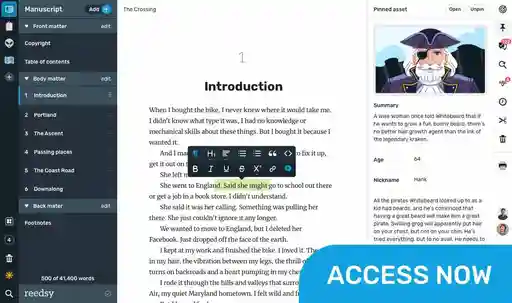

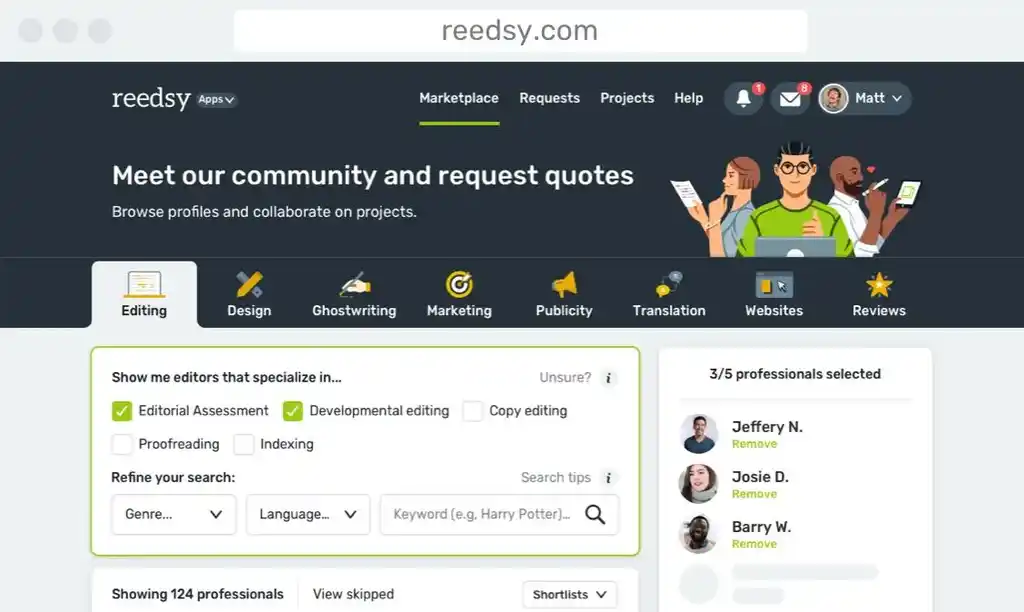
2 responses
Sanni Adoki A. says:
25/08/2019 – 17:54
Good to read your article on Preface, Foreward and Introduction. It has helped me gain knowledge about the subject matter I have a plan to write a book (academic) which I dimmed it fit to include Introduction. However, at what point do I write the Introduction? Is it before writing the body of the book or after the body of book has been written. Thank you for the quick respond in anticipation
↪️ Martin Cavannagh replied:
27/08/2019 – 08:51
I think that a lot of people save writing the introduction until the body of the book is done. After all, you don't want to rewrite the intro if your book turns out differently to how you planned it :)